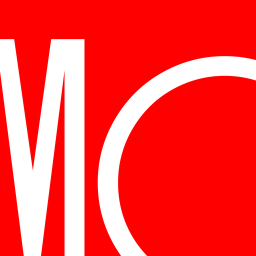Sherwin-Williams' Offer for Valspar Looks Fair
We expect the combined company to keep a narrow economic moat.
While Sherwin-Williams has primarily been a U.S.-focused paint supplier, this transaction will add diversification in Asia Pacific and Europe, the Middle East and Africa, increasing its overall international exposure to 24% from 16% of sales. It also adds exposure to packaging and coil coatings, where Valspar has a strong global position.
We believe the benefit to shareholders comes primarily from the cost synergies of this deal. Management is targeting $280 million of synergies by 2018, increasing to $320 million in the long term. It expects the cost savings to come from selling, general, and administrative (42% of synergies), raw materials sourcing (45%), research and development (5%), and manufacturing/distribution (8%). The raw materials target appears a bit aggressive at 1.5% of cost of goods sold, since both companies should already be fairly efficient there and some synergies may be lost as a result of divestments. Still, the bulk of the targeted synergies are achievable, in our view; we model 80% in our valuation.
The combined company should see cost savings especially in Valspar's paint segment and Sherwin's global finishes businesses, which have historically underachieved versus their potential, in our view. Valspar's paint segment generated EBIT margins of 11.5% in 2015; we think cost savings could help it at least partially close the gap with Sherwin's comparable consumer group margins of 19.6%. Sherwin's global finishes group reported EBIT margins of 10.5% in 2015, but should be able to close the gap with Valspar's coatings segment's 17.8% margins through cost savings. While these segments are not perfectly comparable (Valspar's paint segment includes international sales and its general industrial coatings margins are lower than the coatings segment average), the magnitude of the gaps suggests room for improvement remains. While both companies could improve profitability in these segments separately, we believe there are cost benefits to integration through shared operating expenses and improved materials sourcing with greater volume. In addition, both companies will share manufacturing and operating know-how to improve results in the lackluster segments.
The attractiveness of the deal depends highly on the execution of these cost synergies. The transaction represents an enterprise value/EBITDA multiple of approximately 11 times for Valspar, including the synergies, which is a reasonable price, in our view, and the same multiple we use to value the company's cash flows beyond our explicit forecast. Excluding the synergies, the transaction would represent a hefty multiple of about 15 times. While subject to risk, Sherwin's strong record of value-accretive acquisitions (Comex U.S./Canada and various paint store rollups) increases our confidence in the synergies of the deal.
Divestments large enough to derail the deal entirely are unlikely, in our view, although some may be required in the North American paint industry. If regulators require the divestment of more than $650 million of Valspar's revenue, the transaction price will be adjusted to $105 per Valspar share. Required divestitures of more than $1.5 billion allow Sherwin-Williams to terminate the transaction. We think divestitures of that level are unlikely. The companies primarily overlap in their North American paint business, with both selling products through retail do-it-yourself channels as well as in general industrial coatings. Revenue in Valspar's North American paint segment was approximately $1.0 billion in 2015, and its general industrial coatings revenue was about $750 million. The firm would have to divest itself of both businesses entirely for the deal to be derailed. By our estimates, these two companies combined account for approximately 20% of U.S. do-it-yourself paint volume. Masco (Behr) MAS and PPG PPG also have midteens market shares. There will probably be some divestitures required here, given that these market concentrations may trigger U.S. regulatory scrutiny. Divestments in industrial coatings are unlikely, given the fragmented nature of this subindustry, with Sherwin and Valspar accounting for less than 5% market share combined.
We do not expect financing for this all-cash deal to be an issue. Sherwin-Williams has the capacity to increase debt; it currently has low financial leverage with net debt/EBITDA of 1.0 in 2015. To finance the deal, Sherwin-Williams has received commitments for $8.3 billion-$9.3 billion of additional debt. This adds to its existing $1.8 billion net debt and Valspar's $2.0 billion, increasing leverage to more than 4 times (based on trailing EBITDA plus run-rate synergies). We expect the combined company to quickly pay down debt through free cash flow generation, since these are attractive businesses with low capital intensity. To support their balance sheets during this transition, both companies are suspending share repurchases, aside from offsetting dilution from employee equity. The company should see net debt/EBITDA decline to 2.0 times over the next four to five years, after which it would consider resuming share repurchases.


/cloudfront-us-east-1.images.arcpublishing.com/morningstar/PLMEDIM3Z5AF7FI5MVLOQXYPMM.jpg)
/cloudfront-us-east-1.images.arcpublishing.com/morningstar/I53I52PGOBAHLOFRMZXFRK5HDA.jpg)
/cloudfront-us-east-1.images.arcpublishing.com/morningstar/CEWZOFDBCVCIPJZDCUJLTQLFXA.jpg)